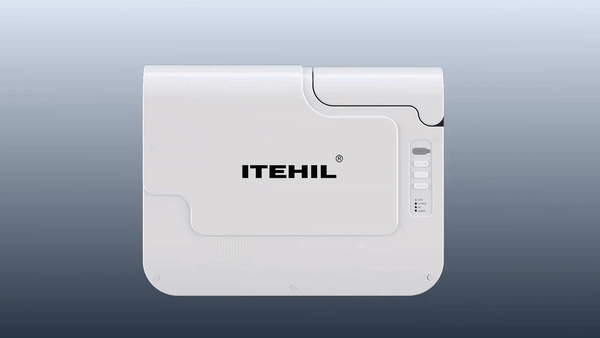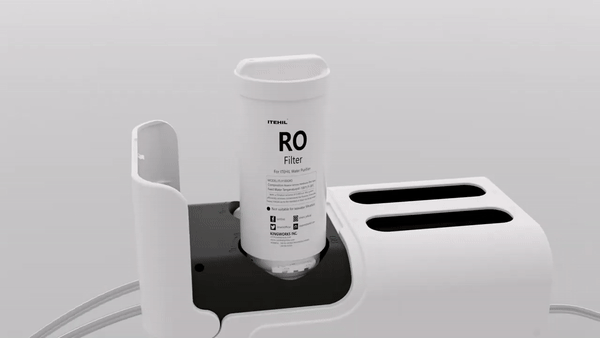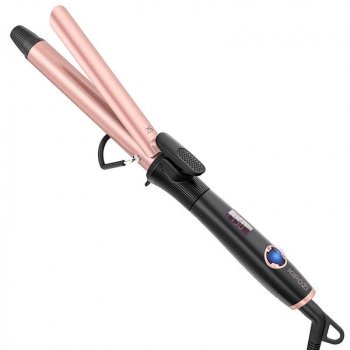Pure Water, Pure Life: A Journey with the Ultra-Efficient PVC Removing Water Purifier


In a world where health and wellness are constantly in the spotlight, there’s one essential resource we often take for granted: water. Clean, pure water isn’t just a luxury; it’s a necessity for our bodies, our minds, and our families. And yet, not all water is created equal. From city taps to rural wells, contaminants can sneak into our water supply, bringing risks we might not even see or taste. That’s why investing in a reliable water purification system isn’t just a smart choice—it’s essential. This story follows Sarah, a mother of two, on her journey to find the best water purifier for her family, and it dives into the technology behind today’s advanced purification systems.
Chapter 1: The Quest for Pure Water
Sarah had always thought her tap water was “good enough.” She lived in a suburban neighborhood with a modern infrastructure, so she assumed her water was clean and safe. But after reading an alarming news article about contaminants in municipal water supplies—including the presence of polyvinyl chloride (PVC) and other harmful chemicals—she started to worry.

She wanted to be sure her family was drinking the safest, purest water possible, especially for her children, who were still young and vulnerable to potential health issues from contaminants. Her research began with a question: what’s the best water purifier on the market today? And more importantly, what makes it different from the filters her parents used back in the day?
Chapter 2: The Evolution of Water Purification
As Sarah dove into her research, she realized how much water purification technology had evolved over the years. Her grandparents had relied on basic sediment filters, which could remove large particles like dirt and rust but couldn’t filter out microscopic contaminants or chemicals. In the 1990s, her parents upgraded to a charcoal-based water filter, which was a step up. Charcoal filters could improve taste and remove some organic chemicals, but they were still limited in terms of filtering out heavy metals, bacteria, and other hazardous substances.

The introduction of reverse osmosis (RO) in the late 20th century was a game-changer. RO systems use a semi-permeable membrane to remove up to 99% of contaminants, including heavy metals, bacteria, and even salt. But RO systems weren’t perfect. They were often bulky, wasteful (discarding several gallons of water for each gallon purified), and required frequent maintenance. Still, they represented a major leap forward in the quest for pure water.
Today, water purification has reached new heights with advanced systems that incorporate multiple stages of filtration. Sarah was amazed to learn about the latest technologies, like the purifier she’d discovered in her research: the Ultra-Efficient PVC Removing Water Purifier. This model didn’t just rely on one method; it combined several filtration techniques, including advanced RO, activated carbon, and self-cleaning mechanisms, to provide a comprehensive solution.
Chapter 3: The Science Behind the Ultra-Efficient Purifier
The Ultra-Efficient PVC Removing Water Purifier boasted some of the most cutting-edge technology in the industry. Unlike traditional filters that only target a limited range of contaminants, this purifier was designed to tackle nearly all known impurities, with a special focus on PVC—a compound increasingly found in water supplies due to industrial runoff and aging plumbing systems. Sarah was intrigued to learn that this purifier could remove 99.99% of PVC and other contaminants, giving her peace of mind about the water her family drank every day.

Key Technologies in the Ultra-Efficient Purifier
- Reverse Osmosis (RO): The core technology, RO uses a fine membrane to block even the tiniest contaminants, including chemicals, heavy metals, and bacteria. This technology has evolved to be more efficient, reducing water waste significantly compared to older models.
- Activated Carbon Filter: RO removes most contaminants, but activated carbon adds an extra layer of filtration, targeting chlorine, volatile organic compounds (VOCs), and improving the taste and smell of water. Activated carbon is known for its ability to absorb impurities, making the water more palatable.
- Self-Cleaning Mechanism: This was one of Sarah’s favorite features. Traditional RO systems needed frequent cleaning and filter replacements, but the Ultra-Efficient Purifier had a built-in self-cleaning function. This feature extended the life of the filters, saving her time and money on replacements.
- Energy-Efficient Design: Unlike older RO systems, which could be quite power-hungry, this purifier ran on just 24 watts, consuming less electricity than a standard light bulb. For Sarah, who was mindful of her environmental footprint, this was an appealing feature.
- High Flow Rate: Many water purifiers have a slow filtration process, making it challenging to get enough purified water for a whole family. This purifier offered a flow rate of 350 gallons per day—more than enough for daily use, even if her family had guests over.
Chapter 4: Testing the Water Purifier at Home
After reading countless reviews and comparing features, Sarah decided to purchase the Ultra-Efficient PVC Removing Water Purifier. It arrived in a sleek, countertop-friendly design that was easy to set up. Within minutes, Sarah had it connected and ready to go.

The first thing she noticed was the taste. The water was crisp, almost sweet—a stark contrast to the slightly metallic taste she’d become used to. She felt confident knowing that the water was free from PVC, chlorine, and any other invisible contaminants. Her kids, who were usually picky about water, drank it without hesitation, commenting on how “fresh” it tasted.
The self-cleaning feature quickly proved its worth as well. Unlike her parents’ old RO system, which often required disassembly and manual cleaning, this purifier took care of itself. It used a quick, automated rinse cycle to flush out any buildup, keeping the filters clean and extending their lifespan.
Chapter 5: Why Pure Water Matters
As she watched her family enjoy the clean water, Sarah reflected on why pure water was so important. Water isn’t just a basic necessity; it’s a foundation for health. Contaminants like PVC, chlorine, and heavy metals have been linked to various health issues, from digestive problems to more severe conditions like cancer and developmental delays in children.

Sarah felt reassured knowing she was taking proactive steps to protect her family. She also thought about the versatility of her new purifier. Because it was portable and countertop-friendly, she could bring it along for camping trips or vacations. No more worrying about questionable tap water in unfamiliar places. The purifier’s high capacity—over seven gallons—meant it could easily support her family’s needs, whether they were at home or on the road.
Chapter 6: How This Purifier Compares to Other Systems
Sarah’s friends often asked her about the purifier, especially after they tasted the water. Some of them had older RO systems or simple activated carbon filters, so she shared her knowledge about the differences.
Compared to a traditional RO system, the Ultra-Efficient Purifier was more versatile and required less maintenance. The self-cleaning feature was a significant advantage, and the multi-stage filtration provided an extra layer of security against contaminants.
For those who only used activated carbon filters, Sarah explained that while they improved taste and removed some chemicals, they didn’t offer the same level of protection as RO. Activated carbon alone couldn’t block out heavy metals or microscopic pollutants like PVC. Only a multi-stage system, like her purifier, could tackle such a wide range of impurities.
Chapter 7: The Future of Water Purification
As Sarah became more aware of water quality issues, she started to think about the future. Clean water was becoming scarcer in some parts of the world, and even in developed countries, pollution and aging infrastructure were threats to water safety. The Ultra-Efficient PVC Removing Water Purifier felt like a step toward a safer future, where everyone could have access to pure, healthy water regardless of their location.

In her research, she read about upcoming technologies, like nanofiltration and UV sterilization, which could further enhance purification systems. Scientists were also exploring methods to filter out emerging contaminants, such as microplastics and pharmaceutical residues, which standard filters couldn’t handle yet. The Ultra-Efficient Purifier represented the cutting edge of today’s technology, but Sarah knew that water purification would only continue to improve as science advanced.
Conclusion: Pure Water for a Healthier Life
Sarah’s journey with the Ultra-Efficient PVC Removing Water Purifier had been more than just a purchase; it was an investment in her family’s health and well-being. By choosing a purifier that combined the latest technologies—reverse osmosis, activated carbon, and self-cleaning mechanisms—she could finally feel confident in the water her family was drinking.
Every time she filled a glass, she felt grateful for the peace of mind this purifier provided. She knew that, whether they were at home or on the go, her family had access to the purest water possible. And in a world where so much was beyond her control, that was a comfort she couldn’t put a price on.


















Leave a comment